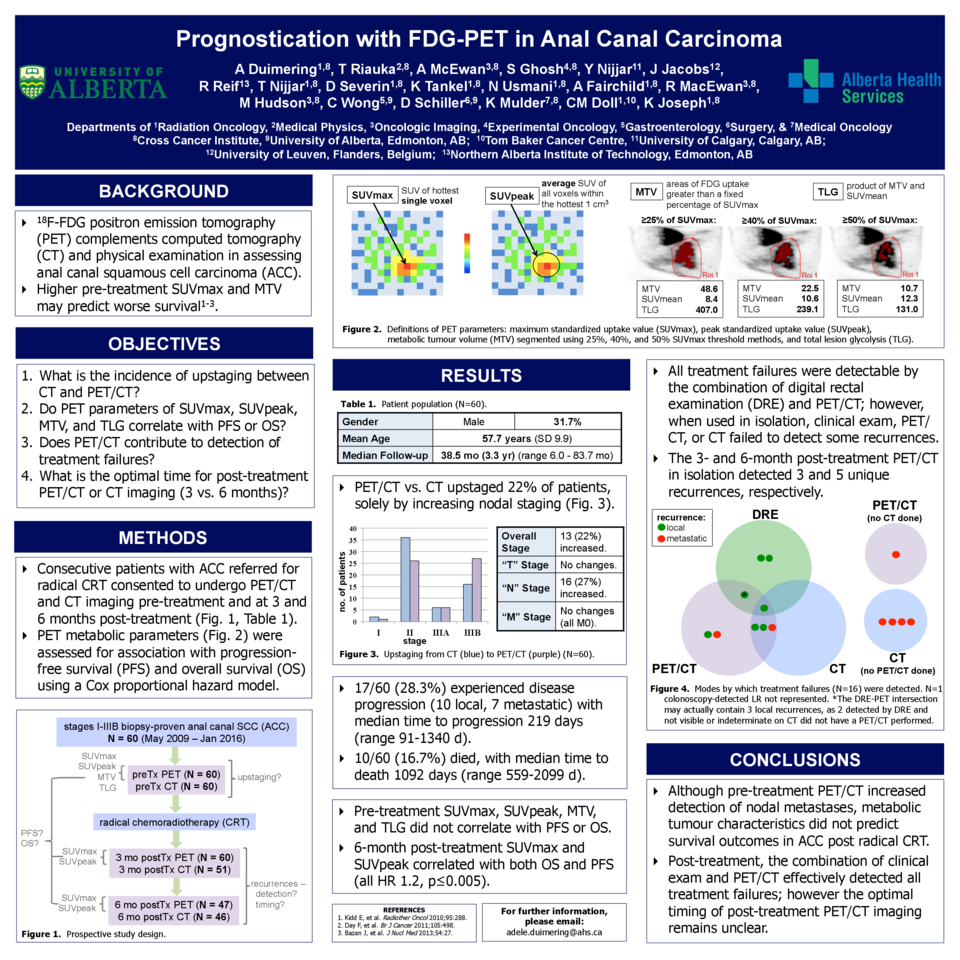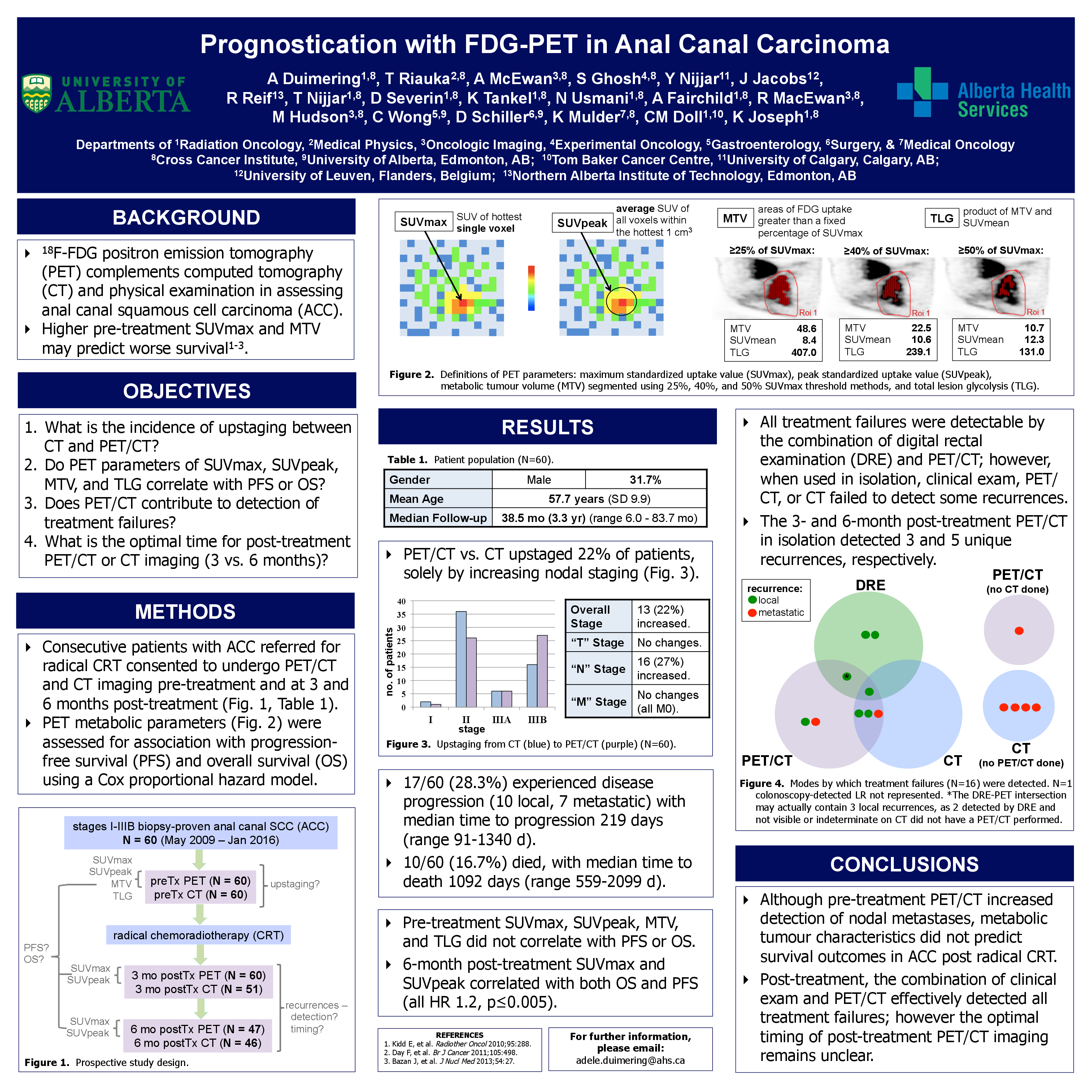Abstract
Purpose
Anal canal tumour burden holds prognostic information, but may be difficult to assess using computed tomography (CT). Position emission tomography (PET) can inform management, with suggestion that higher maximum standardized uptake value (SUVmax) and metabolic tumour volume (MTV) on pre-treatment PET predicts worse survival. We sought to prospectively assess the contributions of PET to initial staging and prognostication in anal canal squamous cell carcinoma (ACC).
Materials and methods
Consecutive patients with biopsy-proven ACC referred for radical chemoradiotherapy (CRT) to a tertiary cancer centre consented to undergo 2-deoxy-2-[fluorine-18]fluoro-D-glucose (18F-FDG) PET/CT imaging pretreatment. Clinicopathologic data were collected and CT and PET/CT imaging reviewed for contributions to staging. SUVmax, peak standardized uptake value (SUVpeak), MTV, and total lesion glycolysis (TLG) were assessed for association with progression-free survival (PFS) and overall survival (OS) using a Cox proportional hazard model.
Results
Between May 2009 and January 2016, 60 patients with clinical stages I-IIIB ACC, 68% female, mean age 58 years, completed curative-intent radiotherapy and concurrent 5-fluorouracil and mitomycin C chemotherapy. Median follow-up was 38.5 months (range 6.0-83.7 mo). 17/60 (28.3%) experienced disease progression (10 local, 7 metastatic) with median time to progression 219 days. 10/60 (16.7%) died, with median time to death 1092 days. PET/CT vs. CT upstaged 22% of patients, in all cases by increasing nodal staging. Pre-treatment SUVmax, SUVpeak, MTV, and TLG did not significantly correlate with PFS or OS.
Conclusions
Although pre-treatment PET/CT increased detection of nodal metastases, metabolic tumour characteristics did not predict survival outcomes in ACC following radical CRT.






